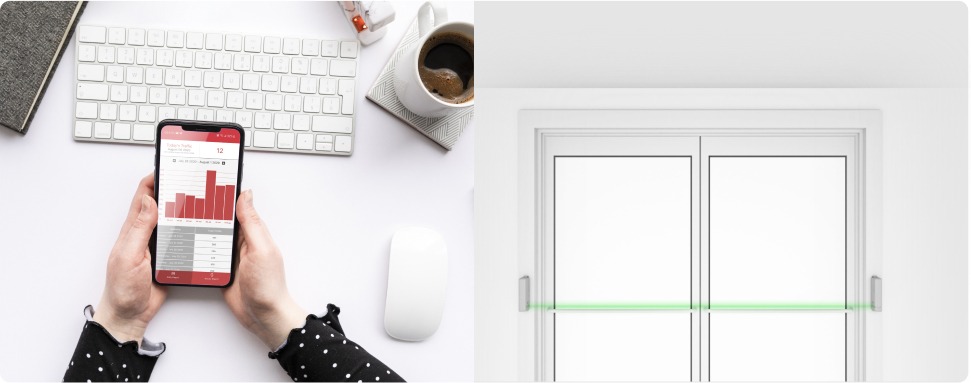Customer Counting Systems
A customer counting system is a management tool designed to identify your store’s closing ratio, which is the percentage of all the traffic that entered the store that actually bought something. No store sells to everyone. Most mall-based specialty stores sell to less than half their traffic. Many stores sell less than 10%. Even if your store is a stand-alone, destination location, or a main or high street store, the chances are that you sell significantly less than half your traffic.
It doesn’t matter what your actual closing ratio is. The purpose of the traffic counter is to help you understand your current ratio and improve it. There are periods during a day or a week when the closing ratio is high; and there are periods when it is low. You don’t sell to the same percentage of traffic every hour of every day. Understanding when and under what conditions your stores perform best will help you maximize performance on the traffic that enters every hour of every day.
How does a traffic counter work?
Motion detectors or cameras are located at your store entrance or entrances. These motion detectors record a count each time the beam is broken or a customer passes through the entrance.
Successful Implementation
An international apparel chain decided to increase sales using more and better customer service. The first thing they did was install traffic counters to establish the exact staff to traffic ratio. Then they proceeded to improve it gradually.
At a time when most retailers were cutting staff, this chain began ADDING hours, in spite of sluggish sales. In many stores, hours on Saturdays, Sundays, and other key selling periods were doubled. One store increased staff from 2 to 4 people on Friday evenings.
The results were instantaneous. Sales increased; wage costs declined in spite of the additional staff hours.The program was so successful that over a three-year period, the chain’s closing ratio increased from 2% to 7%, with a corresponding increase in same store sales and a reduction in wage costs.
To Conclude
So in conclusion, if you don’t have the data, inevitably it is a guessing game as to when your busiest store times are for people traffic. However if you have the data to hand, it will assist you in making informed decisions which in turn will have an effect on cost reductions across a number of areas.












